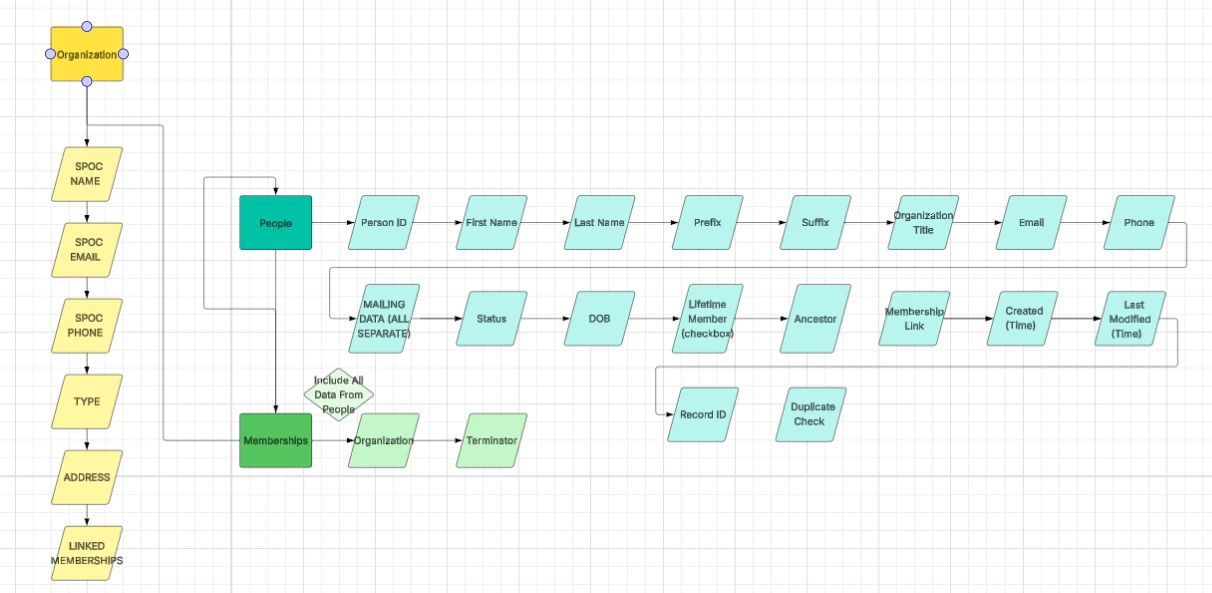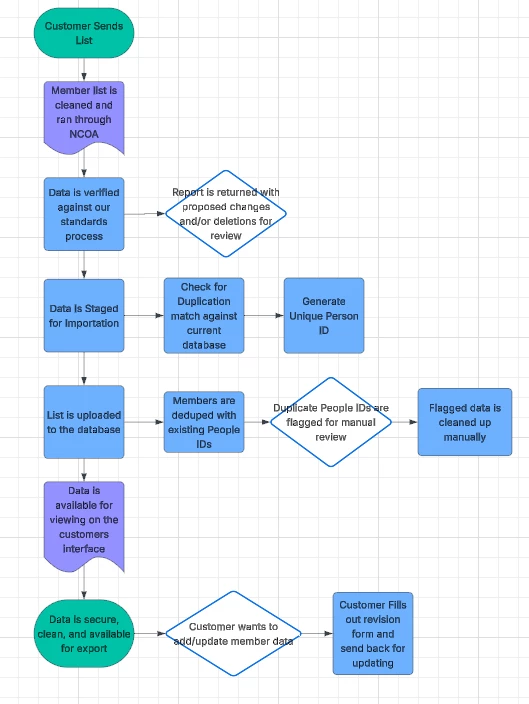Hi everyone, I'm a bit new to using tools like AT and am looking for some feedback. My overall goal is to maintain membership data within organization(s). These organizations are linked together to some capacity and have overlapping members. I want to use this to my advantage so that updates from one organization update the profile of the person (and thus other organizations).
I included some organizational charts below to get a better idea of what I’m trying to accomplish.
The main problems I’m having with the current setup is:
How to handle the unique person ID problem. Data lists provided are not 100% standardized with complete information. only 10% of records may have a phone/email, so do I resort to fuzzy matching based on first/last + zip code?
User defined fields. Some clients may have a field they want to store for information like membership ID #, DOB, etc. How do I allow for this without adding a new field everytime and updating all my automations.
How to safely handle bulk imports and allow secure client-specific views and updates. I created the staging step as a way to build in an automation step that flags records > as a potential match > if not, it goes through automations from People > Membership.





